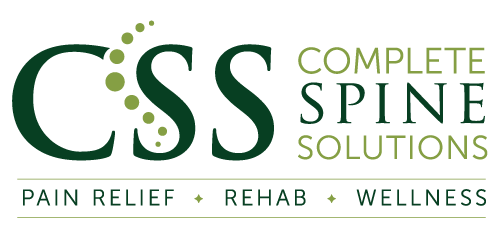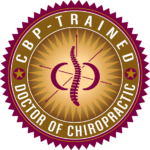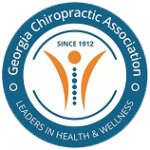
Did you know that most of the nerves in your body are not sensitive to pain? This means that there could be a problem with your spine that could affect the organs, muscles, or tissues that the nerve connects to, without you feeling any pain.
Discovering the Complex Anatomy of the Spine
The spine, also known as the vertebral column, is a complex structure that plays a crucial role in supporting and protecting our bodies. It is made up of 33 individual vertebrae that are stacked on top of one another, forming the central axis of the skeleton. In this section, we will explore the anatomy of the spine in detail.
The spine is divided into five regions: cervical, thoracic, lumbar, sacral, and coccyx. Each region has a specific number of vertebrae and performs specific functions.
The intervertebral discs are the cushions between two vertebrae. They are made up of a tough outer layer called the annulus fibrosus and a soft, gel-like center called the nucleus pulposus. These discs act as shock absorbers, allowing the spine to flex and bend while protecting the vertebrae from wear and tear.
The spinal nerves are the nerves that branch out from the spinal cord and carry messages from the brain to and from the rest of the body. There are 31 pairs of spinal nerves that exit the spine through small openings between the vertebrae. These nerves supply sensation and motor function to specific regions of the body, such as the arms, legs, and organs.
Common Spinal Problems that Can Affect Your Daily Life
The spine is one of the most critical structures in our body, as it is responsible for providing support and stability while allowing us to move and bend. Unfortunately, the spine is also susceptible to various problems that can affect its functionality and cause pain. In this section, we will discuss some of the most common spinal problems.
- Herniated Discs
Herniated discs occur when the outer layer of the intervertebral disc, which acts as a cushion between two vertebrae, tears, allowing the soft inner material to protrude. This can lead to pressure on the nerves and cause pain, numbness, or weakness in the arms or legs.
- Spinal Stenosis
Spinal stenosis occurs when the spinal canal narrows, putting pressure on the spinal cord and nerves. Bone spurs and arthritis are common causes of this pressure. This can cause pain, numbness, and/or weakness in the arms and legs.
- Degenerative Disc Disease
Degenerative disc disease is a condition where the intervertebral discs lose their water content and begin to shrink, which can lead to reduced cushioning and flexibility of the spine. This can cause pain and/or stiffness in the back or neck.
- Spondylolisthesis
Spondylolisthesis occurs when one vertebra shifts out of position and onto the vertebra below it. This can cause pressure on the spinal nerves and shearing force on the disc, leading to pain, numbness, or weakness in the legs.
Key Mechanisms of Spinal Pain
Spine pain can be caused by a variety of factors, including injury, poor posture, degenerative conditions, and age-related changes. Understanding the mechanisms of spine pain is critical for effective diagnosis, treatment, and management of the condition.
- One of the key mechanisms of spine pain is nociception. This process involves specialized sensory nerve fibers called nociceptors that respond to noxious stimuli such as heat, cold, pressure, and chemical irritants. When these nociceptors are activated, they send signals to the spinal cord and brain, resulting in the sensation of pain.
- Inflammation and immune response also play a significant role in spine pain. Inflammation is the body’s response to injury or infection, and it involves the release of various chemical mediators such as cytokines. When inflammation occurs in the spine, it can cause pain, stiffness, and swelling.
- Finally, central sensitization is another mechanism of spine pain. This process involves changes in the nervous system that result in the amplification of pain signals. When central sensitization occurs, the body’s response to pain can become exaggerated, leading to increased pain sensitivity and a decreased pain threshold.
The Silent Spine: Understanding the Consequences of Untreated Spinal Problems
The spine is a vital component of the body that supports movement, posture and protects the spinal cord. However, many spinal problems can go undetected and untreated, leading to severe consequences.
One of the main reasons spinal problems can go unnoticed is that the spine does not have many nerve endings, so pain or discomfort may not be felt until a problem has progressed significantly. This is why spinal problems are often referred to as “silent” problems.
Untreated spinal problems can cause a variety of consequences, ranging from mild to severe. For example, spinal misalignments can cause muscle imbalances and lead to chronic pain. Untreated spinal stenosis can cause numbness, weakness, and even paralysis. If left untreated, spinal tumors can grow and spread, leading to further health complications.
In addition to physical consequences, untreated spinal problems can also have emotional and psychological effects. Chronic pain can cause depression, anxiety, and difficulty with daily activities, leading to a decreased quality of life.
Severe spinal problems do not get better on their own. As a matter of fact, they tend to get worse due to the effects of gravity. Early, non-invasive structural intervention can most likely help reverse the debilitating effects of spinal problems.
How do you know if you have a spinal problem?
Spinal problems can manifest in a variety of ways and can range from minor discomfort to debilitating pain. The spine is a complex structure that is responsible for supporting the body, protecting the spinal cord, and facilitating movement. Any issues with the spine can affect these functions and lead to a variety of symptoms.
Symptoms can vary widely, but some common more severe signs that something might be off include back pain, neck pain, headaches, numbness or tingling in the arms or legs, and limited mobility.
If you suspect that you have a spinal problem, it is important to seek medical attention from a qualified healthcare professional who specializes in musculoskeletal issues, or your local chiropractor. They can perform a thorough examination and conduct diagnostic tests, such as X-rays or MRI scans, to determine the root cause of your symptoms.
Effective Preventative Measures for Spinal Problems
Preventing spinal problems requires adopting healthy lifestyle habits and taking care of your body. This includes regular exercise, maintaining a healthy weight, avoiding prolonged sitting and standing, proper posture, and chiropractic care.
In addition, advanced chiropractic care can help prevent spinal problems by promoting spinal alignment, mobility, and function. Chiropractors use gentle, non-invasive techniques to adjust the spine, relieving tension and pressure on the nerves and muscles. This can help prevent spinal misalignments, which can lead to pain, stiffness, and other problems.
Early intervention is essential in preventing spinal problems from developing into more severe conditions. Advanced chiropractic care can help detect and correct spinal issues before they become more serious. It can also help identify other health issues that may be related to the spine, such as headaches, digestive problems, and chronic pain.
About the Author

Dr. David Shapiro, DC, CEO of Complete Spine Solutions
A graduate of Life University, School of Chiropractic 1993 (4600 postgraduate hours). Board certified licensed Doctor of Chiropractic. Passed 3 national board tests and the state of Georgia board examination. Also certified in therapeutic modalities.
Advanced Certified in Chiropractic BioPhysics, the most evidence-based technique in chiropractic. He’s been in private practice for over 25 years.



